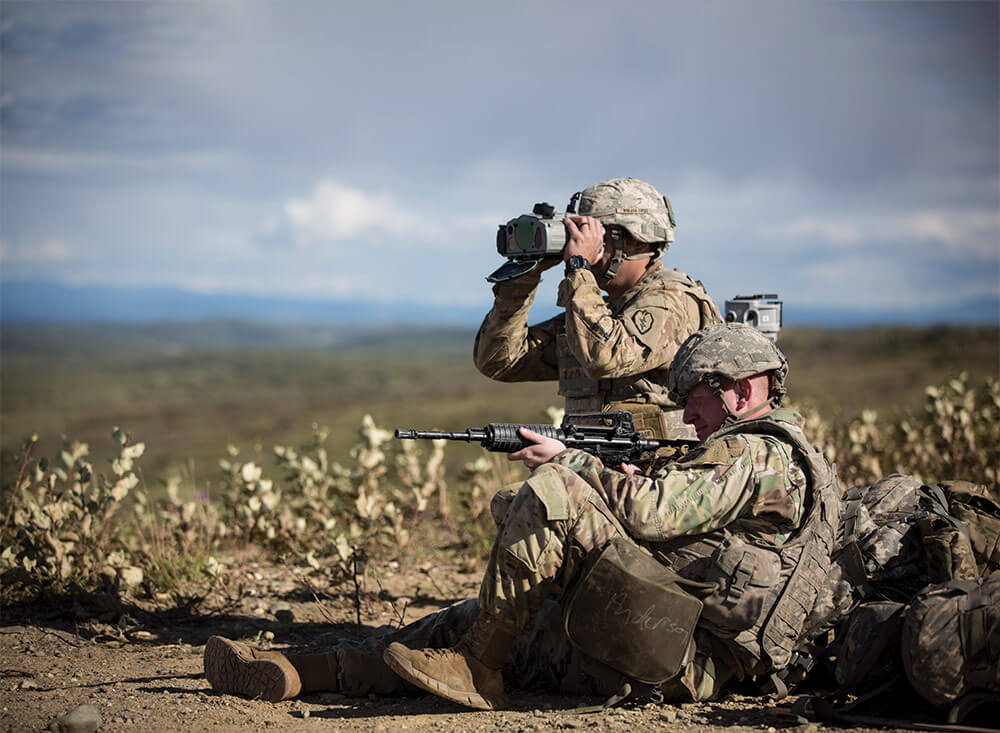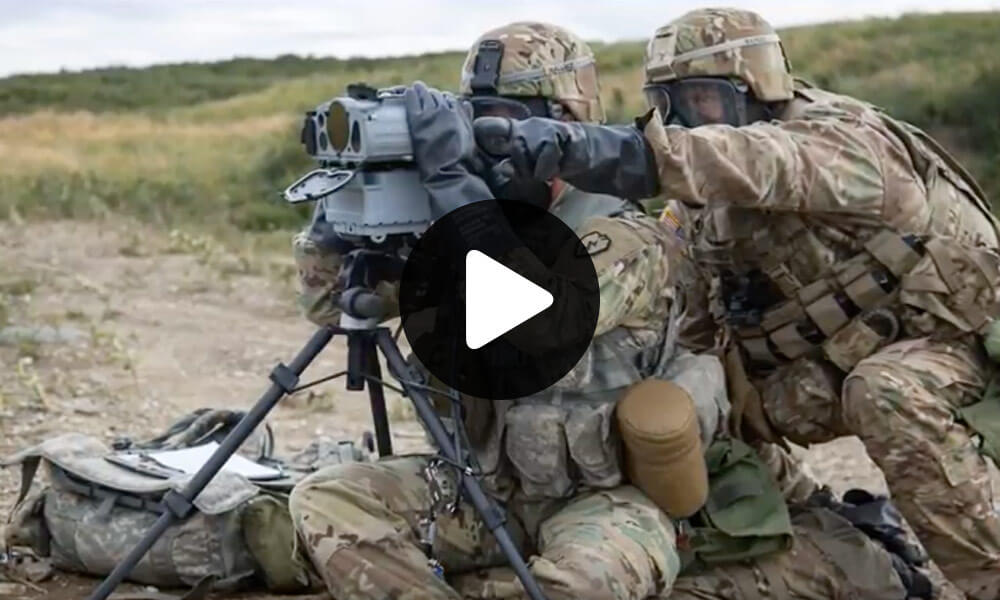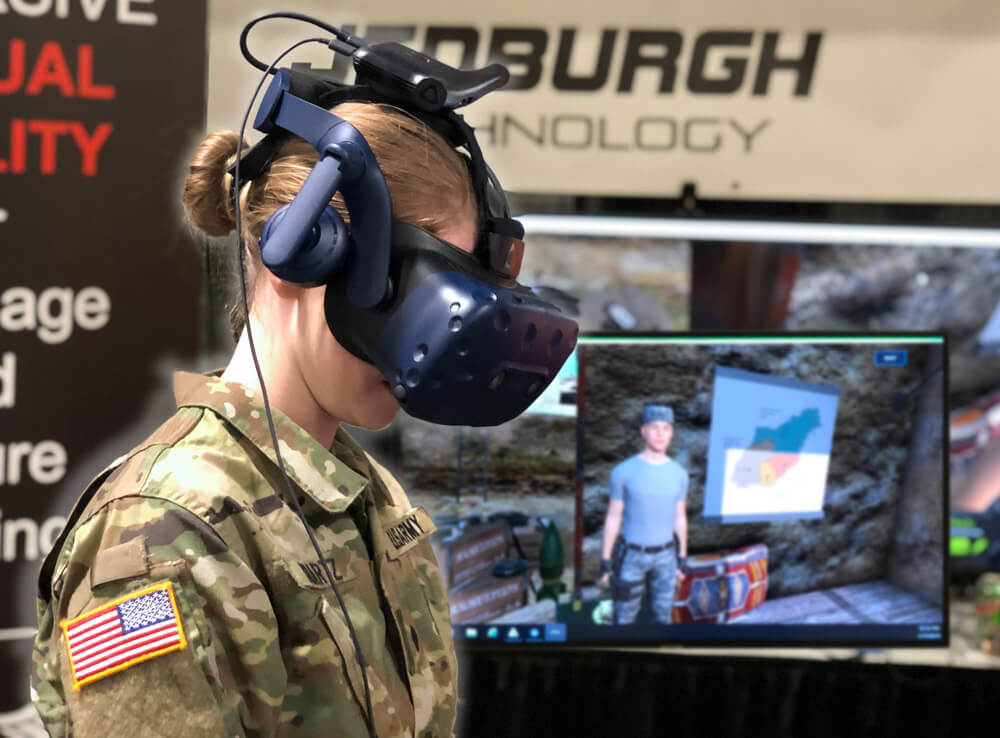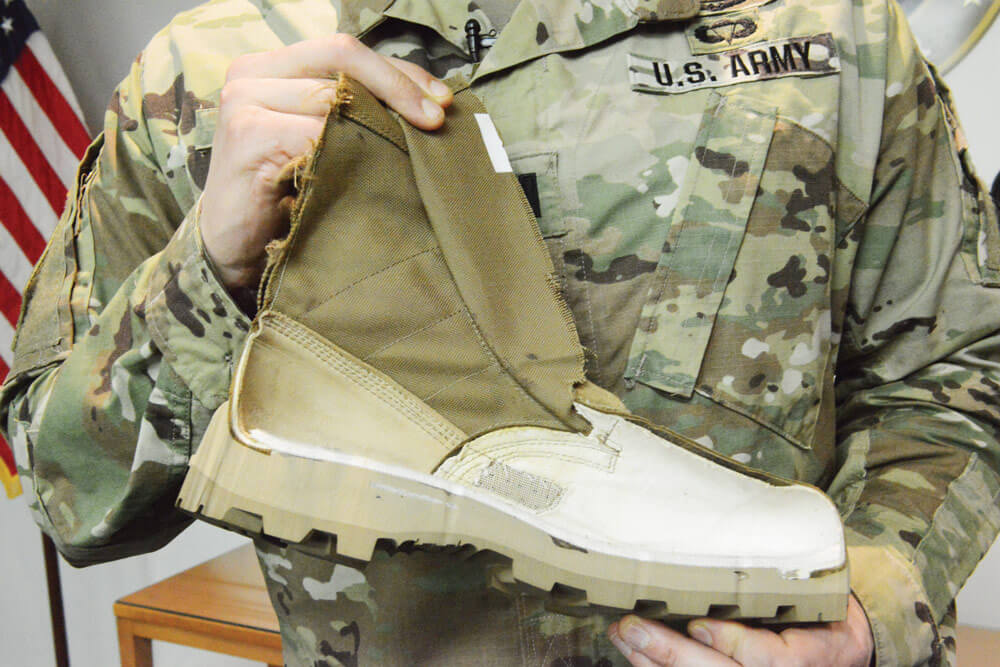New Targeting System Gives Forward Observers a Decided In-Field Advantage
The Army’s newest laser targeting system promises to change the landscape of field artillery missions for the better. Offering greater precision and increased response times over previous targeting systems, the new Joint Effects Targeting System, or JETS, will enable field artillery Soldiers to engage the enemy with a new level of speed and agility.
According to the Army Acquisition Support Center, JETS is a one-man-portable, hand-held targeting system that is designed to rapidly acquire, accurately locate and engage targets using precision-guided munitions, and improve the effectiveness of engagement with unguided munitions. It is comprised of a modular advanced sensor suite consisting of a hand-held target location module, a precision angle module and a laser marker module. Collectively, these elements provide the forward observer with capabilities not available through any currently fielded targeting system.
“Its brand new, cutting-edge technology that is a paradigm shift in how Field Artillery is employed across the battlespace,” said LTC Michael Frank, Product Manager of Soldier Precision Targeting Devices at Program Executive Office (PEO) Soldier, the Army’s equipment development management group. “With JETS, I turn [an M777A2] howitzer or a Paladin into a giant sniper rifle. I’m dropping that round, with first-round effects, on target.”

According to JETS developers at PEO Soldier, JETS promises to cut the field artillery targeting time by up to 20 minutes.
“Standoff doesn’t just mean range anymore,” LTC Frank said. “It means time. We can get kinetic effects on a target, and we don’t have to take anywhere from 15 to 20 minutes to go through [calculations]. We can get that target data to the guns and rounds out of the tube faster with JETS.”
Expectations are set high for JETS. According to CPT Eric Munn, JETS assistant product manager, “JETS will revolutionize how the Field Artillery conducts precision fire missions. A hand-held, stand-alone, true precision targeting device that is fielded to every Forward Observer team will increase the agility and lethality of Field Artillery as a whole.”
To ensure the Army’s self-imposed set of high expectations are being met, PEO Soldier, along with the U.S. Army Operational Test Command (USAOTC) – the Army’s only independent operational tester – took JETS through a battery of meticulous in-field testing.
For nearly two weeks in August of 2017, JETS underwent a limited user test with six teams of forward observers and data collectors from the 2nd Battalion, 8th Field Artillery Regiment, 1st Stryker Brigade, based out of Fort Wainwright, Alaska. The testing took place atop mountains in the rugged landscape near Fort Greely, Alaska. Here, Soldiers picked out targets and called in data acquired through JETS.
During the testing, Soldiers have ample opportunity to experiment with all of the functions on the new targeting system. “We’d take it up there and use it all day long,” said SPC Israel Wallace, FO, Delta Battery, 2nd Battalion, 8th Field Artillery Regiment. “We’d shoot grids, see if we could find anything wrong with it — see how long the batteries lasted, you name it.” SPC Wallace went on to add, “If I was running around up in the mountains, constantly moving, setting up hasty [observation posts], I would take the JETS over the LLDR [Lightweight Laser Designator Rangefinder] any day.”
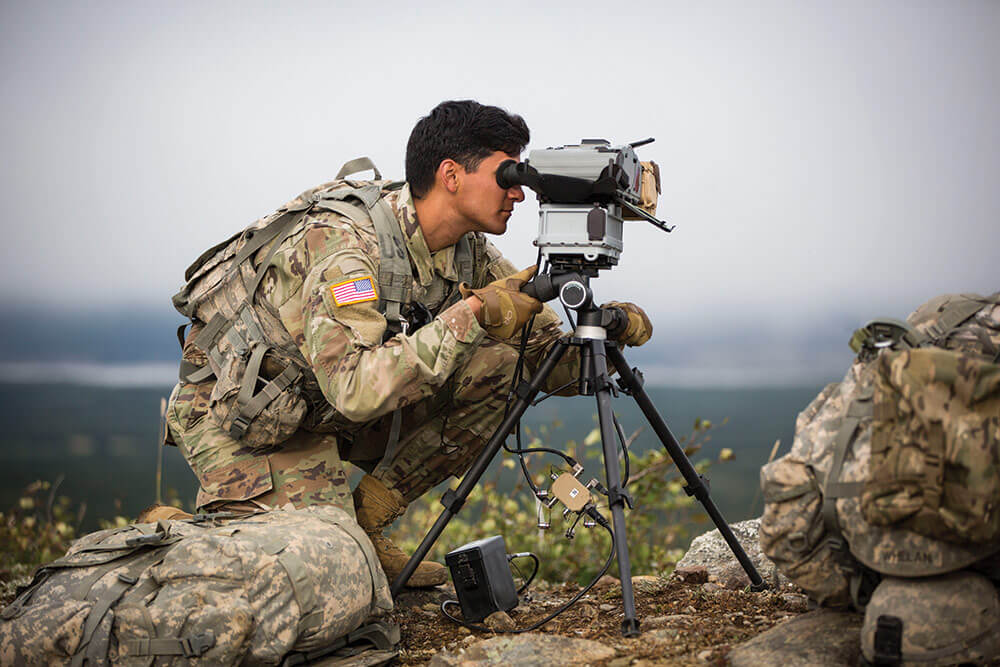
JETS is noted to be significantly improved over previous targeting systems. It has a reduced weight when compared to the LLDR and increased capability when compared to the Vector 21 Laser Target Locator (LTL).
The new system is built by BAE Systems and DRS Technologies and comes in just over five pounds. That’s pretty impressive when compared to the LLDR, which is crew-served and weighs just under 35 pounds. The LTL compares a little better to the JETS. It too is around five pounds, and its target identification range is 4.2 kilometers in the daytime and up to five kilometers at night, while JETS is just 2.5 kilometers during the day and one at night.
But JETS has other advantages. It allows target engagement with precision munitions and allows digital connectivity to request and control indirect fires and close air support from all Joint assets, thereby allowing small units that are supported by forward observers to have access to precision targeting in any operational situation.
While the user test was designed to measure the system’s consistency, reliability and ease of use, it wasn’t designed to test JETS’ in-field durability. That will become more apparent when the system undergoes its initial operational test and evaluation (IOT&E) scheduled for early February 2018.
The IOT&E will place JETS in the hands of Soldiers once again as they put it through its paces, ensuring its readiness for full use before deployment and subsequent live fire.
Repeat testing may seem tedious, but it is critical to discovering a new system’s notable attributes, as well as those that may still require tweaking. Ultimately, any piece of equipment is only as good as its practicality when used by Soldiers on the ground.
“One of the most important parts of these tests is determining how suitable JETS is for the Soldier and what we need to fix prior to fielding these systems to the Army,” explained CPT Munn. “The Soldier is the ultimate customer and we have to ensure that they can employ the system effectively and reliably.”
Though the IOT&E has yet to be completed, CPT Munn noted his already-firm confidence in the overall ability of JETS. “Our goal in the acquisition community is to increase our Soldiers’ survivability and ability to win on the battlefield,” he said. “The JETS system accomplishes both tasks by giving the forward observer time and space to defeat enemies on the battlefield.”
JETS is expected to be fielded to Soldiers between July and September of this year.
By STAFF WRITER Matthew Liptak
VIDEO
